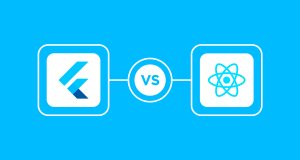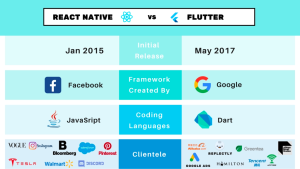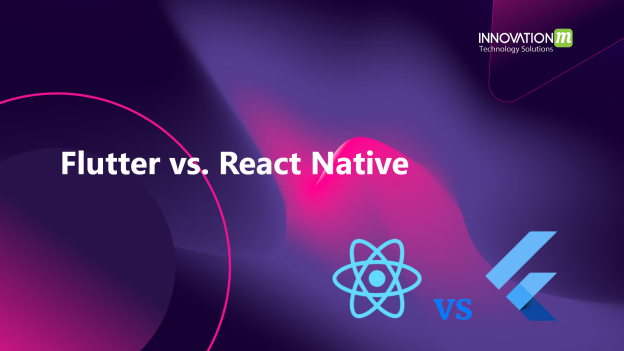In the world of modern app development, two prominent players have emerged: Flutter and React. These frameworks offer developers the tools to create captivating, high-performance applications for various platforms. However, they cater to different needs and preferences. In this blog post, we’ll delve into the key differences between Flutter and React, helping you make an informed decision when choosing the right framework for your next project.

1. Language and Approach
One of the most fundamental distinctions between Flutter and React lies in the programming languages they utilize. Flutter employs Dart, a language developed by Google, which offers a reactive programming model. React, on the other hand, uses JavaScript, the quintessential language of the web, and follows a component-based approach.
While Dart might be less familiar to developers initially, its syntax is clean and modern, resembling languages like Java and JavaScript. JavaScript, on the other hand, has a vast and mature ecosystem, making it accessible to a broader audience. If you’re already well-versed in JavaScript, transitioning to React might be more intuitive.
2. User Interface Development
Flutter is renowned for its widget-based approach to UI development. Everything in Flutter is a widget, from basic elements like text and buttons to complex layouts. This consistency allows for a more cohesive and customizable user experience across platforms.
React Native, the mobile development framework built upon React, employs a similar concept but integrates native components into its architecture. While React Native provides a more “native” feel, Flutter’s widgets allow for more creative and consistent designs.
3. Performance
Flutter’s performance is exceptional due to its unique approach. It doesn’t rely on the native UI components of the underlying platform; instead, it renders its widgets directly onto the screen. This can lead to faster rendering times and a smoother user experience, especially for graphics-intensive applications.
React Native, while offering a good balance between performance and native integration, may sometimes require additional tweaking to achieve top-notch performance. Flutter’s “write once, run anywhere” philosophy gives it a slight edge in this aspect.
4. Development Environment
Flutter comes with a powerful integrated development environment (IDE) called Flutter/Dart IDE. This IDE offers various features, such as a hot-reload function that enables developers to instantly see the effects of their code changes without rebuilding the entire application. On the other hand, React development usually involves tools like Visual Studio Code or WebStorm.
React development, particularly with React Native, can be influenced by the intricacies of the native platforms you’re targeting, which might require more configuration.
5. Community and Ecosystem
React has a massive and well-established community, along with an extensive ecosystem of libraries, tools, and resources. This means you’re likely to find solutions to common problems and have access to a wide range of third-party packages.
While Flutter’s community is growing rapidly, it might still be somewhat smaller compared to React’s. However, Google’s support and active development are bolstering Flutter’s ecosystem, and it’s gaining traction quickly.
6. Platform Support
Flutter excels in providing a consistent user experience across platforms, as it enables developers to write a single codebase for both iOS and Android apps. React Native also offers cross-platform capabilities, but some platform-specific tweaks might be necessary for a truly native feel.

Conclusion
In the Flutter vs. React debate, the choice ultimately depends on your project’s requirements and your development team’s expertise. If you prioritize a unified UI design, and exceptional performance, and don’t mind working with Dart, Flutter might be your go-to framework. On the other hand, if you’re more comfortable with JavaScript and want access to a well-established ecosystem, React could be the better choice.
Remember that both frameworks have their strengths and weaknesses, and what suits one project might not fit another. Regardless of your choice, both Flutter and React are powerful tools that can help you craft outstanding applications for a diverse range of platforms.
 End to End Technology Solutions
End to End Technology Solutions
